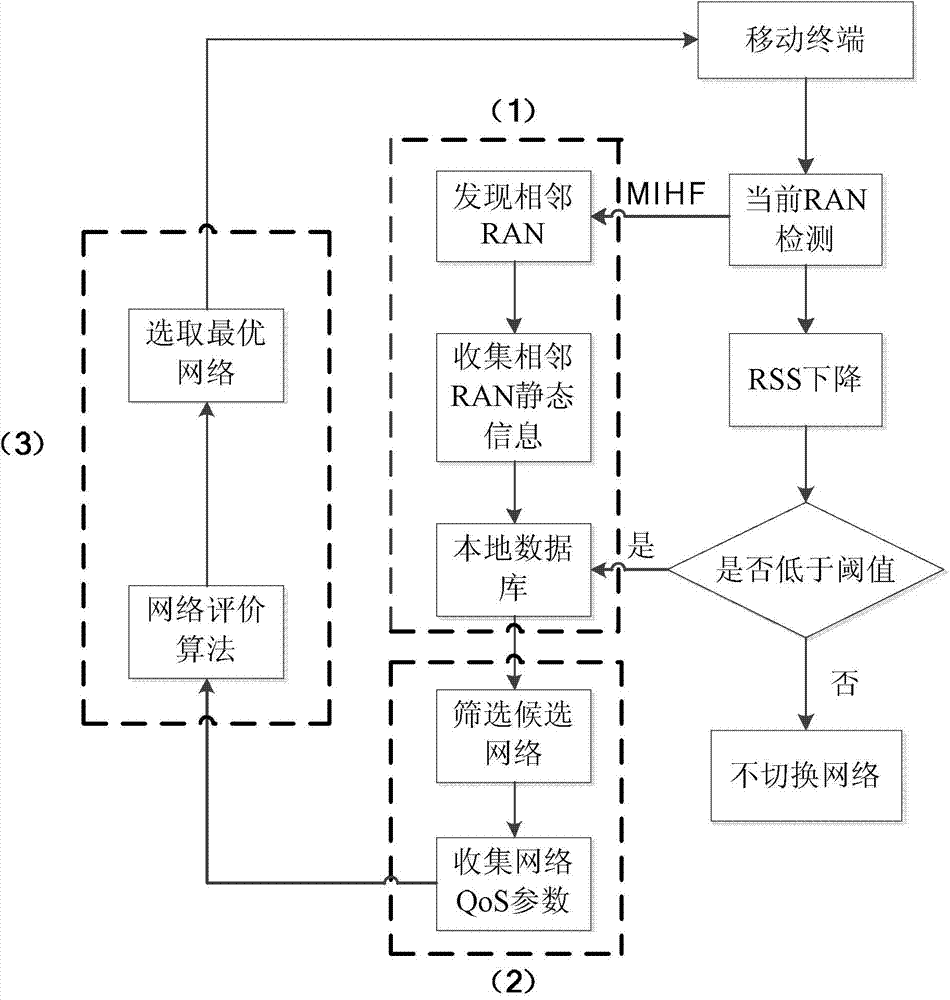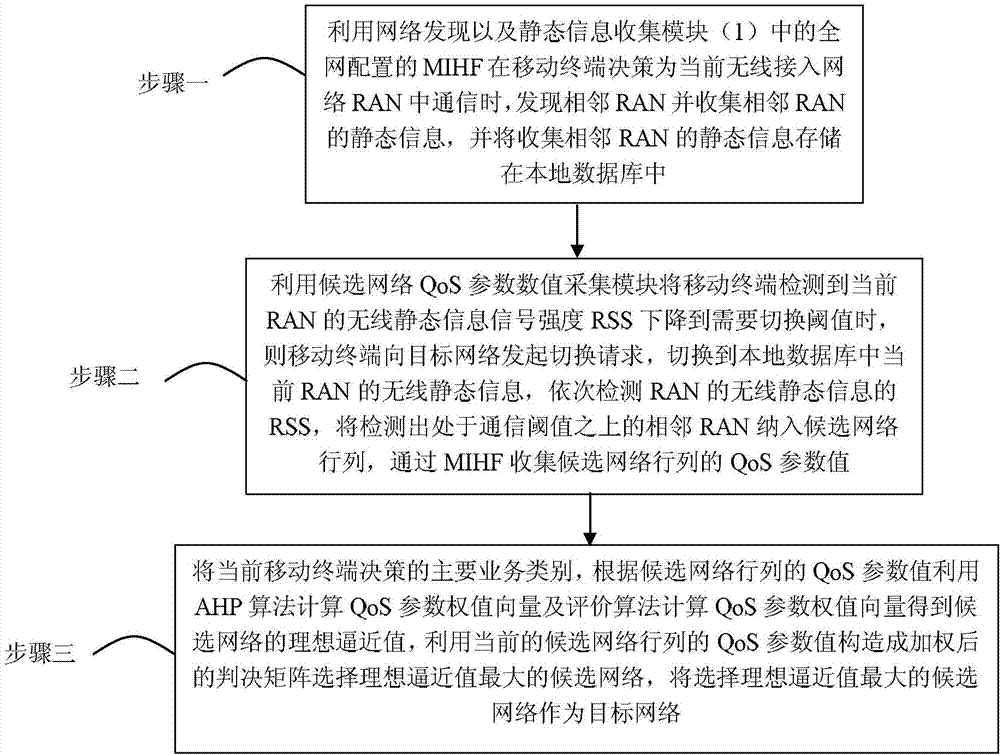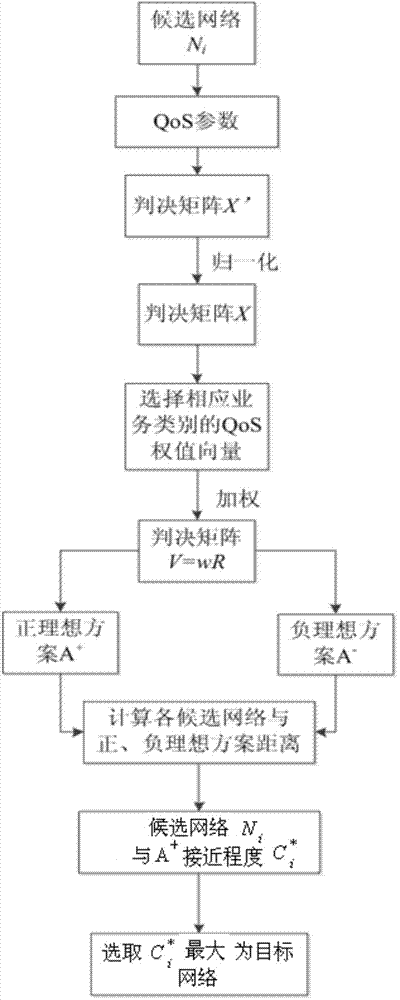Heterogeneous network selection system and method based on business type weight differentiation
A service type, heterogeneous network technology, applied in the field of heterogeneous network selection system, can solve problems such as load imbalance between networks, weaken service quality, reduce network utilization, etc., achieve low bit error rate, and improve network load imbalance. Effect
- Summary
- Abstract
- Description
- Claims
- Application Information
AI Technical Summary
Problems solved by technology
Method used
Image
Examples
specific Embodiment approach 1
[0028] Specific implementation mode 1: A heterogeneous network selection system based on service type weight distinction in this implementation mode specifically includes:
[0029] Network discovery and static information collection module 1, candidate network QoS parameter value collection module 2 and candidate network evaluation and selection module 3;
[0030] The network discovery and static information collection module 1 discovers neighboring RANs through MIHF and collects static information of neighboring RANs;
[0031]The QoS parameter value collection module 2 of the candidate network detects network discovery successively and the static information collection module 1 collects the RSS of the adjacent static information RAN, incorporates the RSS of the detected adjacent static information RAN into the ranks of candidate networks, and collects the current QoS parameter values of candidate network ranks;
[0032] The candidate network evaluation and selection module...
specific Embodiment approach 2
[0037] Specific embodiment 2: The difference between this embodiment and specific embodiment 1 is that the MIHF used by the network discovery and static information collection module 1 for the entire network configuration is determined by the mobile terminal as the current radio access network (RadioAccess Network, RAN) When communicating in ), the neighbor RAN is found and the static information of the neighbor RAN is collected, and the static information of the neighbor RAN is collected and stored in the local database; wherein, the handover mode of the mobile terminal decision refers to the selection of the entire network and the handover decision by the mobile The terminal initiates and determines the final target network, which is the leading behavior of the terminal, not determined by the network;
[0038] The candidate network QoS parameter value collection module 2 is used for when the mobile terminal detects that the signal strength of the wireless static information o...
specific Embodiment approach 3
[0040] Embodiment 3: This embodiment differs from Embodiment 1 or Embodiment 2 in that: a heterogeneous network selection method based on service type weight distinction includes the following steps:
[0041] Step 1. Using the network-wide configuration MIHF in the network discovery and static information collection module 1, when the mobile terminal decides to communicate in the current radio access network (RadioAccessNetwork, RAN), discover neighboring RANs and collect static information of neighboring RANs , and collect the static information of the adjacent RAN and store it in the local database; where MIHF assumes that the entire network has been configured with the Media Independent Handover Function (MIHF) of IEEE802.21;
[0042] Step 2: When the mobile terminal detects that the wireless static information signal strength (RadioSignalStrength, RSS) of the current RAN drops to the handover threshold by using the QoS parameter value acquisition module of the candidate net...
PUM
 Login to View More
Login to View More Abstract
Description
Claims
Application Information
 Login to View More
Login to View More - R&D
- Intellectual Property
- Life Sciences
- Materials
- Tech Scout
- Unparalleled Data Quality
- Higher Quality Content
- 60% Fewer Hallucinations
Browse by: Latest US Patents, China's latest patents, Technical Efficacy Thesaurus, Application Domain, Technology Topic, Popular Technical Reports.
© 2025 PatSnap. All rights reserved.Legal|Privacy policy|Modern Slavery Act Transparency Statement|Sitemap|About US| Contact US: help@patsnap.com



